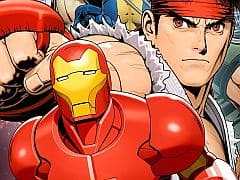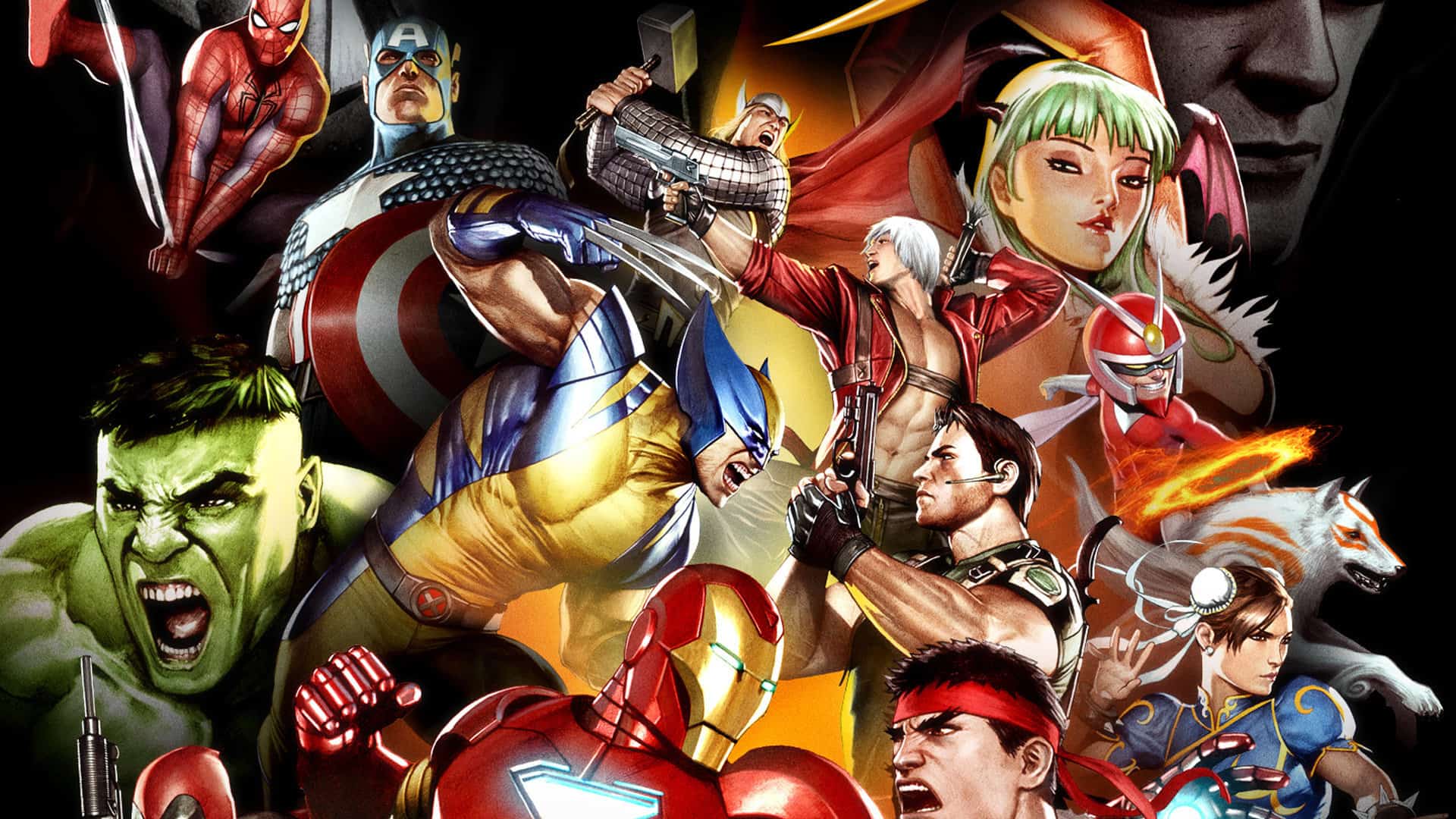You can trust VideoGamer. Our team of gaming experts spend hours testing and reviewing the latest games, to ensure you're reading the most comprehensive guide possible. Rest assured, all imagery and advice is unique and original. Check out how we test and review games here
So, you’ve dribbled over the character roster, gawked at the super-lush art style, and marvelled (ha!) at the spectacular combos. You know you want Marvel vs Capcom 3, and the very thought of playing it has sent blood rushing to the naughtiest parts of your body. But one question remains: how on Earth are you going to pull off those 21-hit aerial combos?
As it turns out, the answer is “with less difficulty than you might think”. The speed and immediate intensity of MvC3 may be intimidating if you’ve been playing Street Fighter IV for months, but once you get a feel for its systems you’ll find it’s arguably a more welcoming experience. And while it’s certainly true that you can do surprisingly well by mashing buttons like a seal receiving ECT, there’s no doubt that the game will happily reward players who are prepared to make a genuine effort to improve their play.
If you’ve been following coverage of this title – our last preview is available here – you’ll know that MvC3 uses a four-button system, consisting of light, medium and heavy attacks, plus a launcher. Land a successful hit with the latter and you’ll send your unfortunate opponent flying high into the air; if you immediately tap up on your stick or pad as soon as the blow connects, you’ll leap up after them. At this point you’ll have the opportunity to batter seven shades out of your foe with an aerial combo, and by adding a second press of the launcher button, along with a directional input, you can tag out to one of your other two fighters and allow them to continue the punishment.
It sounds complicated, but in practice it’s only the timing of the initial follow-up jump that presents any real difficulty – and even this is swiftly mastered. The real challenge, of course, is in learning how best to brutalise your airborne rival. At the most basic level MvC3 uses an escalating system for its combos, allowing light attacks to cancel into medium ones, and medium attacks into heavy – but needless to say, that’s just the tip of the beatdown iceberg. If you’re not entirely sure what “cancel” means, don’t fret; just forget about it and make like that convulsing seal.
While launchers and aerial combos have been part of the fighting game establishment for decades – if the genre had a Ten Commandments, they’d probably be high on the stone tablets somewhere – it’s somewhat unusual for the launcher to have its own dedicated button. The idea is that this setup allows everyone, even newcomers, an easy introduction to a relatively technical concept. And while the heroes and villains on offer differ wildly in their appearance and combat style, the vast majority of their moves are mapped to shoto inputs – i.e. quarter-circle or dragon punch motions. While you do come across the odd rapid-tap or charge command, there are no purely charge-based characters. No matter who you’re using, you’ll invariably be able to perform their basic special attacks – and since Hyper Combos simply require a quarter circle motion plus two buttons (in most cases), you’ll be able to unleash their more spectacular onslaughts with relative ease.
It’s early days yet, but the feeling I’m getting is that this accessibility will encourage players to pick up and use a greater spread of characters than with something like SF4, where people tend to pick one or two fighters to “main”. Naturally high-end players will still do this, but there’s such diversity on display here that most of us will gleefully flit back and forth between our favourites – and since MvC3 is a three-on-three game, the potential for interesting teams is enormous.
The build I’ve been playing only features 30 of the thus-far-confirmed 34 fighters, but even so I’ve been utterly spoiled for choice. Deadpool continues to delight with his fourth-wall-breaking, play-it-to-the-crowd tomfoolery, but it’s the evil Super Skrull who’s slowly emerging as my favourite from the Marvel side. He’s got a decent projectile attack, a meaty throw move and an extremely handy rapid-tap move, Tenderizer, that can be used for cheap air combos if you’re feeling lazy; for this reason, I wouldn’t be surprised to see him emerge as a popular choice online. Iron Man is just as annoyingly effective as he was in previous Capcom fighters, while the flame-skulled Dormammu plays an interesting keepaway game, in a not too dissimilar style to Blackheart in Marvel Super Heroes and MvC 2.
On the Capcom side, Chris Redfield continues to offer near-criminal levels of fun; it may be cheap to spam you opponent with shotgun and magnum attacks, but that doesn’t stop it from being undeniably entertaining. One of his higher-level Hyper Combos also sees him whipping out a rocket launcher, letting the player direct control of where the missiles go; it’s utterly ridiculous, and allows for total humiliation of the other player. Using Wesker effectively is a bit more challenging since his short-range style relies upon you getting right up in your opponent’s face, but his teleport certainly allows for a few mind games, which seems appropriate.
To be honest, I’m still struggling to get much use out of the midget-sized brawlers – Viewtiful Joe can piss right off, as far as I’m concerned – but I’ll admit that I’ve got a soft spot for Arthur from Ghouls and Ghosts. When he takes too much of a battering his armour falls off, leaving him to fight in his underpants; at this point he’s pretty much dead if you don’t tag him out or re-clothe him with his hyper combo. Neat little references like this are to be found absolutely everywhere in MvC3. It’s a wet dream for Capcom and Marvel fans alike, so serious aficionados of both are liable to slip into some form of serotonin overdose.
Regardless of the clears stabs at opening the game up to new players, hardcore veterans have little cause to worry about the action being dumbed down. I’m still very much learning the ropes, but as I say it’s already clear that there’s a huge degree of depth to the combo system for people who put the hours in – not to mention advancing guards, snapback moves and other high-end mechanics that are probably best discussed elsewhere.
The only potential concern I can foresee lies in the character balance. With such a massive set of fighters available, it’s almost inevitable that one or two choices will tower over their peers. At the moment it seems as if Dr Doom can kill his opponents by simply looking at them in funny way – he really is that godlike. The build I’ve been playing certainly isn’t final, but I have a feeling that he and one or two others may generate strangled cries of “BS!” and “he’s so OP!”
On the other hand, his name is Dr Doom; he didn’t spend three years on a Ph.D in Disaster Studies at the University of the Apocalypse for nothing, did he?
Marvel vs Capcom 3: Fate of Two Worlds will be released on February 18 for PS3 and Xbox 360.
Marvel vs. Capcom 3: Fate of Two Worlds
- Platform(s): PlayStation 3, Xbox 360
- Genre(s): Arcade, Beat 'em Up, Fighting

/https://oimg.videogamer.com/images/abfa/marvel_vs_capcom_3_143.jpg)






